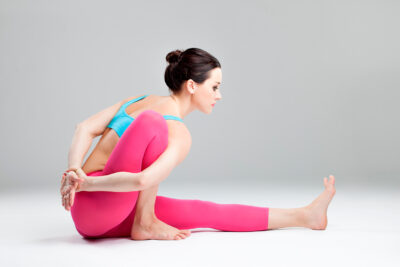
Cellojones – As we know that many Japan’s national dishes are famous in almost all corners of the world. In fact, we can find Japanese restaurants serving Japanese dishes in almost every country.
The delicious taste, unique appearance, and unique cooking and serving techniques have made this food much sought after by people from outside Japan.
However, who would have thought that some of these Japanese dishes have a long history.
History of Japan’s National Dish
It can be said that the most popular Japanese foods in the world are ramen, sushi and sashimi. As soon as we hear the name of these foods, we immediately know that they come from Japan.
If you are a fan of this Japanese food, take a look at its history to learn more about your favorite dish.
1. Sushi
Sushi originally came from a method of preserving fish from Southeast Asia which then spread to China and then to Japan. This preservation method is called narezushi.
Narezushi is a method of preserving fish by placing it on top of salted rice, then wrapping the outer part in a leaf. After going through the fermentation process, the fish will still be fit to eat even though it has been stored for a long time. After that, the rice and leaves will be removed.
It continues with namanare, food made from raw fish and wrapped in a layer of fish skin. Then eaten before the taste of fish is reduced.
These two foods became the forerunners of sushi that appeared in the Edo period, around 1600 to 1800. At that time, the Japanese put fish and vegetables in a fairly large fist of rice and continued to grow to the appearance of sushi as we know it today.
2. Ramen
Ramen is a noodle dish that was originally brought by the Chinese state as a result of the opening of a port in Japan in 1859. This noodle dish from China is popular among Japanese people. However, among ordinary people, the price of these foods was too high.
Then, over time, in 1910 to be precise, Japanese ramen appeared at a lower price. The forerunner of the ramen we know today was served at the Rairaiken ramen shop in Asakusa. It is known as the first ramen restaurant in Japan and was founded by Kanichi Ozaki.
3. Sashimi
Sashimi is a typical Japanese food which contains raw fish. The tradition of consuming raw fish by Japanese people is known to have been going on for centuries. Then its popularity increased in the 17th century when soy sauce became popular in Japan.
In addition, Japan’s geographical location close to the sea which is rich in fish also supports why Japanese people like this fresh raw fish food.
Read more : Teaching Children about Healthy Eating and Cooking
Technique of Japan’s National Dish

The way of serving Japanese National dishes has its own characteristics. The following are serving techniques for Japanese food, namely sushi, ramen, and sashimi.
1. Sushi
The technique of making sushi must be considered in several aspects. Such as the level of stickiness of rice, freshness of fish, and other mixed ingredients. To make the rice stickier and tastier, add sake to it and mix well.
There are five types of sushi based on the serving technique, namely:
- Chirashizushi which is rice in a bowl with the addition of various toppings. In general, the toppings given are raw fish and vegetables.
- Inarizushi is a type of sushi that uses fried tofu skin as a wrapper.
- Nigirizushi, a type of sushi that is wrapped in nori but has fish wrapped on top.
- Temarizushi has a filling in the form of fish or vegetables, but the shape is round. There is also sasazushi which has a rectangular shape.
- Makizushi is rice rolled in nori or thin omelet, with various fillings.
2. Ramen
The technique for cooking Japanese ramen is by poaching, or boiling the ingredients with the lid on. Generally, noodles are made from flour and water. The more water, the chewier the noodles.
The noodle stew is put into a bowl containing a gravy made from various types of broth, generally pork stock. Then the ramen topping usually consists of chasiu, menma, and sliced scallions added on top of the noodles.
3. Sashimi
There are several ways to enjoy sashimi including namasu. Namasu is a way of eating thinly sliced raw fish dipped in soy sauce. But there are also those who add it with a little wasabi and chili sauce that comes from a plant similar to horseradish.
Not all types of fish can be made into delicious sashimi. It is known that there are several types of fish that are popular for making sashimi, namely salmon, tuna, clams, octopus, and tobiko.
Conclusion
So, that’s the history and techniques of some of Japan’s national dishes from Cellojones.com. You can also make it yourself at home by following some tutorials on the Internet to be able to taste this food without having to go to a Japanese restaurant.
Read more : 10 Tips to Learn New Skills
Read More
















